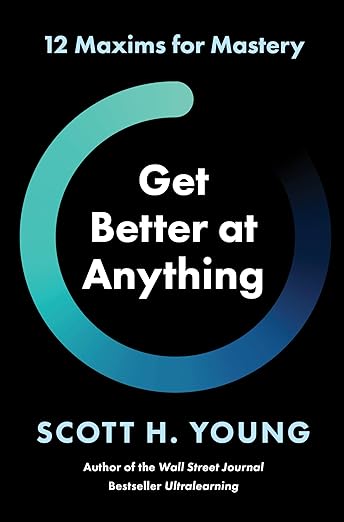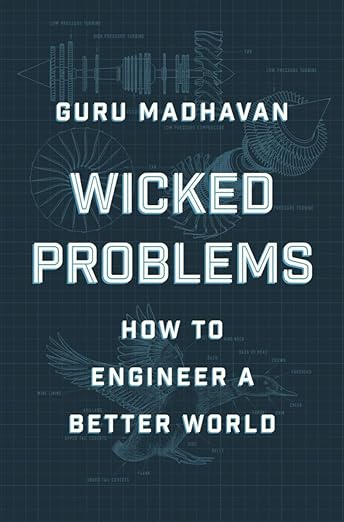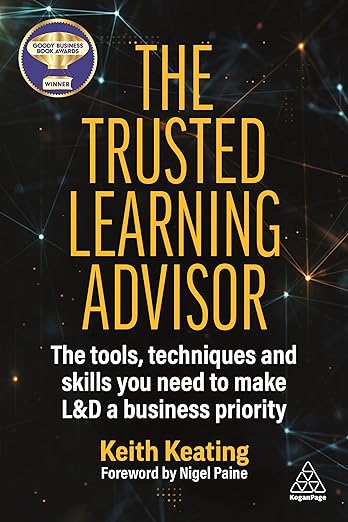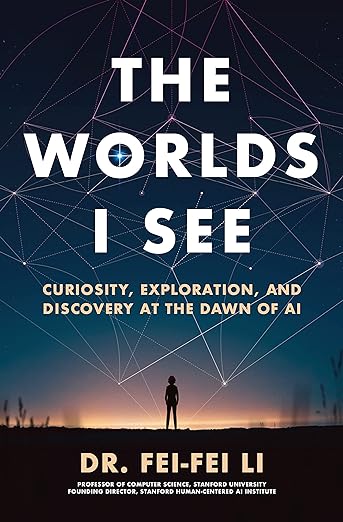
Cheery Friday Greetings to our Learning How to Learners!
Book of the Quarter
Get Better at Anything: 12 Maxims for Mastery, by Scott Young. Scott Young is a well-known blogger and author who has written extensively on learning, skill acquisition, and productivity–he is also interviewed in our very own Learning How to Learn. In his latest book, Get Better at Anything, Scott distills key lessons gleaned from research in cognitive psychology, expertise development, and deliberate practice. The result is a highly practical guide full of actionable strategies for accelerating the learning process in any domain.
What sets this book apart is how Scott brings abstract concepts to life through engaging real-world examples, from the surprising evolution of world-class Tetris players to the intensive training regimens of accomplished jazz musicians. The book is organized around 12 simple yet profound “maxims” such as “Problem Solving is Search,” “Creativity Begins with Copying,” and “Fear Fades with Exposure.” Each maxim encapsulates an important principle about the learning process.
For example, the maxim “Difficulty Has a Sweet Spot” emphasizes the importance of finding the optimal level of challenge to facilitate growth – not so easy that you stagnate, but not so frustratingly difficult that you give up. Scott illustrates this with the story of science fiction author Octavia Butler, (one of Barb’s favorite writers while she was growing up), who progressively increased the difficulty and scope of her writing projects, from short stories to novels, steadily honing her craft over many years.
Like Butler, we too must embrace difficulty, whether we’re learning a new language, instrument, or professional skill. But the difficulty must be carefully calibrated, ideally with guidance from teachers and mentors. Get Better at Anything provides a wealth of tips for navigating the “messy middle” between beginner and expert, where many people hit plateaus or lose motivation.
Other sections explore topics like the power and limits of transferable skills, the necessity of realistic practice environments, and the surprising connection between quantity and quality in creative fields. Throughout, Scott’s infectious curiosity and growth mindset shine through. You can’t help but feel inspired to tackle your own learning challenges with renewed focus and energy.
While aimed at a general audience, Get Better at Anything also offers plenty of insights for educators, coaches, and anyone responsible for developing talent in others. The book’s key takeaways have important implications for curriculum design, assessment, and pedagogy across many domains.
In an era of rapid change, the ability to acquire new knowledge and skills is essential for thriving in work and life. Get Better at Anything is an indispensable resource for honing that ability, with principles that can be fruitfully applied by students, professionals, artists, athletes, and lifelong learners of all stripes. Add this one to your personal development shortlist.
The AI Advantage MasterClass with Ozan Varol
In The AI Advantage, you’ll learn how to master ChatGPT, remove up to 10 hours from your workweek, and unleash levels of creativity and productivity you didn’t even know existed. Your instructor, Ozan Varol, is a literal rocket scientist with a passion for bringing novel, out-of-this-world perspectives to the realm of creativity and innovation. Dive into the course with him and discover what it truly means to approach AI with the mind of a rocket scientist and the creativity of an artist. You’ll get direct, actionable strategies with step-by-step instructions that you can apply immediately.
This course isn’t just about learning AI—it’s about integrating it into your workflow to do more imaginative and innovative work. By the end of the course, ChatGPT won’t just be a digital tool; it will be a highly-skilled co-creator, enhancing your projects for life.
The alumni of the course call it “the best online course I’ve ever taken” and “the best investment I’ve made in my business—it has shaved off nearly 15 hours a week!”
And they’re not alone. Here’s the recent research:
- Professionals that use AI tools like ChatGPT experienced a 40% boost in their productivity (and an 18% boost in output quality).
- Consultants using AI finished tasks 25.1% faster and delivered results that were 40% higher in quality.
- Professionals who teamed up with ChatGPT completed writing tasks 37% faster, and produced better quality writing.
The future of work isn’t about doing more. It’s about imagining and innovating more—and AI is playing a pivotal role in that transformation.
If you don’t want to be replaced by AI, you need to know how to master it.
Sign up for the AI Advantage at this link. Enrollment closes at midnight Eastern on May 3rd. (And yes, Barb is taking the course, also!)
The Social Benefits of Getting Our Brains in Sync
This captivating article by Marta Zaraska in Quanta explores the fascinating phenomenon of interbrain synchrony – the alignment of brain waves that can occur when people work and play closely together. Drawing on a wealth of recent research, it reveals how this neural synchronization is linked to better problem-solving, learning, cooperation, and even altruistic behavior.
The piece takes us on a journey from the early, flawed studies of the 1960s to the cutting-edge experiments of today, showing how advances in brain scanning technology have revolutionized our understanding of interbrain synchrony. It delves into the key ingredients needed for brains to sync up, from eye contact and smiling to shared goals and mutual prediction. Along the way, it highlights captivating examples, from duetting pianists whose brains align as they improvise, to students whose neural synchrony with their teacher predicts how well they retain information.
But this article isn’t just about the science – it’s also about the implications. It suggests that understanding interbrain synchrony could help us communicate more efficiently, design better classrooms, and boost teamwork. It even touches on the potential downsides of our digitally mediated interactions, noting how video calls may impede the brain-to-brain coupling that comes so naturally in person.
This piece is a thought-provoking look at the biological underpinnings of collaboration and connection. It reminds us that even in our complex social world, some of the keys to successful interaction may lie in the simple act of getting in sync. By shedding light on the neural mechanisms behind our social bonds, it offers a fresh perspective on what it means to be on the same wavelength.
Interview with Jargal DeFacto, One of Mongolia’s Most Popular Interviewers
In this riveting episode, world-renowned interviewer Jargal DeFacto sits down with Barb in Ulan Batar as they discuss the revolution taking place in teaching and learning. Oakley shares groundbreaking insights from neuroscience and cognitive psychology that overturn long-held misconceptions about education.
Discover how the physical structure of our brains changes as we acquire knowledge, why both memorization and forgetting play crucial roles in the learning process, and what really happens in the minds of those with Alzheimer’s and Parkinson’s diseases. Oakley reveals the visionary ways countries like Mongolia, Taiwan and Singapore are beginning to incorporate cutting-edge brain science into their educational systems.
She also provides practical tips anyone can use to dramatically boost learning – from the power of metaphor and retrieval practice to the surprising cognitive benefits of action video games for seniors. Don’t miss this mind-expanding conversation at the intersection of neuroscience, learning, and human potential. Tune in now for an unforgettable episode of the DeFacto Interview.
Archaeology of Past Nomads on the Mongolian Steppe
If you’re looking for an intriguing, well-made course, check out this wonderful MOOC on the archeology of past nomads on the Mongolian Steppe, by the National University of Mongolia. Seen with a perspective on the fascinating nomads of the Mongolian nomads of the past, you’ll explore how archaeological studies shed light on their lifestyles, cultural practices, and contributions to broader anthropological topics, such as the construction of monumental structures and urban development of nomadic settlements. Your host is the fantastic (and Indiana Jones-esque!) Professor Jargalan Burentogtokh, an archaeologist who studies past cultural and social processes related to nomads on the Mongolian steppe through their material remains that he finds during his surveys and excavations.
Why Lead Podcast with Ben Owden
Barb recently had the pleasure of being a guest on the Why Lead podcast with the insightful host Ben Owden. Their wide-ranging discussion delved into the fascinating world of learning, motivation, and how neuroscience is transforming the way we approach education.
Ben and Barb explored the common misconceptions about motivation and how it’s not a fixed trait, but rather something that can be created, strengthened and maintained. Barb shared some practical strategies drawn from research to help learners stay motivated even in today’s distraction-filled world.
They also dived into the intriguing advantages that slower learners might have in today’s complex world. While it may seem counterintuitive, there are hidden benefits to not being the fastest learner in the class. Ben and Barb discussed how learning at a more measured pace can cultivate greater flexibility and resilience.
Of course, they couldn’t talk about learning without touching on the hot topic of AI and education. How can we harness AI as a powerful learning tool while avoiding the pitfalls? Barb shared her thoughts on how learners and educators can work with AI to enhance, rather than replace, deeply human skills like creativity and critical thinking. As always, it was a joy for Barb to unpack the complexities of learning, to bust a few myths, and to share some brain-based strategies that can help learners of all ages.
If you’re interested in the future of education, motivation, and the intersection of neuroscience and learning, this is the podcast for you! Grab a cup of coffee, pop in your earbuds, and enjoy!
That’s all for now. Have a happy week in Learning How to Learn!
Barb, Terry, and the entire Learning How to Learn team

















